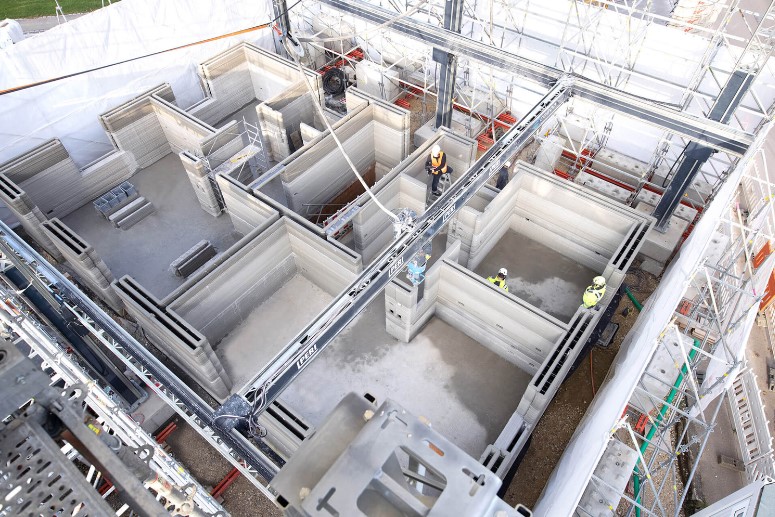An amalgamation of technology and design
The Emergence
3D printing, also known as additive manufacturing was first introduced in the 1980s in Japan by Hideo Kodama., and since has been in use by multiple industries. The technology has evolved considerably since then evolved now used by numerous industries to solve various needs and real-world problems. The architecture and design fields being no exception has indulged extensively in using 3d printing for creating prototypes and variables out of a mere idea in mind.
The journey from an initial working drawing, blueprints to a built or physical model consists of numerous challenges at length and can be tedious.3D printing aims to provide relief from the process.3d printed architectural scale models, help visualise ideas and make them tangible. Moreover,3d printing allows architects to design and develop commodities ranging from individual dwellings, townships and cities to terrains landscapes flora in detail and colour. Thus the technology is set to revolutionise traditional methods of designing and innovation.
It is expected that the 3d printing industry is to see growth between 2021-2028 to about 91 per cent. It is to become an emerging solution to many challenges faced by the architecture industry, such as affordable housing shelters and aids in disaster-prone regions.
3d printing helps shapes concrete without the use of formwork, prefabrication of parts and entire walls can be cost-effectively printed in any form. Architects can develop structures with unprecedented shapes and surfaces for innovative breakthroughs in buildings. It also opens up scope for any organic shape such as curved, straight walls smooth or rough surfaces with no limits to express architectural creativity.
The high degree of planning reliability along with high printing speed requires a low coordination effort.
3D printing integration with architecture. Source
Why 3D printing?
3D technologies help to manage the whole production process, from the early stages of the project to produce it. Structures are being 3D printed at a fraction of the regular cost and time, they are much more eco-friendly thanks to almost zero material waste.
Fast production
3D printing reduces production time in the construction field. About 600-800 square feet structures are completed in 24 hours. Moreover, 3d printers are fully automated which eliminates human error. Other than monitoring, no other human involvement is required.
Lower Construction Rates
3d printing offers a cheaper means to build than traditional construction techniques, the main reason being the need for less energy and efficient use of materials. The material volume can be accurately calculated. Traditional construction methods require labour, time and money which add to the cost.
Simple Integration
The 3D printing layouts can be created easily using CAD applications that render scale models accurately. This pushes the boundaries of design while having the possibility of rendering copies.
Design Possibilities
3D printing helps architects design freely with immaculate accuracy. This pushes the boundaries of design while having the possibility of rendering copies.
Sustainable Construction
3D printed construction is more environmentally friendly. It opens up options of local and natural materials alternative to concrete, which has a heavy carbon footprint. Concrete is often used as the go-to building material in standard construction, already 3D printing companies are experimenting with more sustainable options such as raw earth, biodegradable bamboo, and recyclable thermoplastics.
Trends in 3d printing and architecture
3D printed concept model. Source
Concept Models
The initial step of any project is with the development of a concept and eventually, a model resonating the same. It is a fundamental tool that helps architects, designers as well as clients understand the design. However the transformation from a thought to a mere model as such is time-consuming and expensive. With 3D printing, the process can be efficient and simplified.
Interior Design
Interior Designing has always been a challenging task for architects. With 3D printing complex furnishing, prototypes can be made inclusive of detail. Smaller decor pieces can be replicated and sampled easily with no dependence on expensive materials or human labour. The technique moreover gives customers a wider variety to choose from.
3D printed buildings
Construction of buildings can be difficult and requires intense input from many people, capital and time. Institutions such as NASA are keen on developing habitable structures on the Moon and Mars. This would eliminate the need to end the tone of building materials on a long voyage to these out worldly destinations.
Case Studies
Two Storey Detached House/Germany
The Residence in Germany-3D printed. Source
The 160-metre square entity fundamentally has changed the process of residential construction, The building first of its kind was made by using BOD2 printers. The building consists of triple skin cavity walls filled with insulating compounds.The printer takes into account the pipes for water and electricity which are to be laid later, the installation of which is the only manual labour involved.
Dubai Future Foundation Office /UAE
The approximately 2,600-square-foot, single-story, multi-building campus was designed by Gensler for the United Arab Emirates National Committee as the headquarters for the Dubai Future Foundation (DFF).
The process required one person to monitor the printer’s functioning, seven people to install the building components, as well as a team of ten electricians and specialists to take care of the mechanical and electrical engineering. The entire cost of the project was only 140,000 dollars: the technique cut both building and labour costs by 50 per cent compared to conventional buildings of similar size.
The 3D-printed office was constructed using a special mixture of cement and building materials designed and made in the United Arab Emirates (UAE) and the United States.
BOD2 printer at work. Source
To conclude 3D printing has many uses in the architecture industry, from building concepts models to building entire structures while saving time and money. It also benefits designers and clients, letting them change the concept model quickly and relatively inexpensively.
To Read About More Such Facts Log Onto Material Depot
